Golfer’s elbow causes pain at the inside of the forearm and elbow.
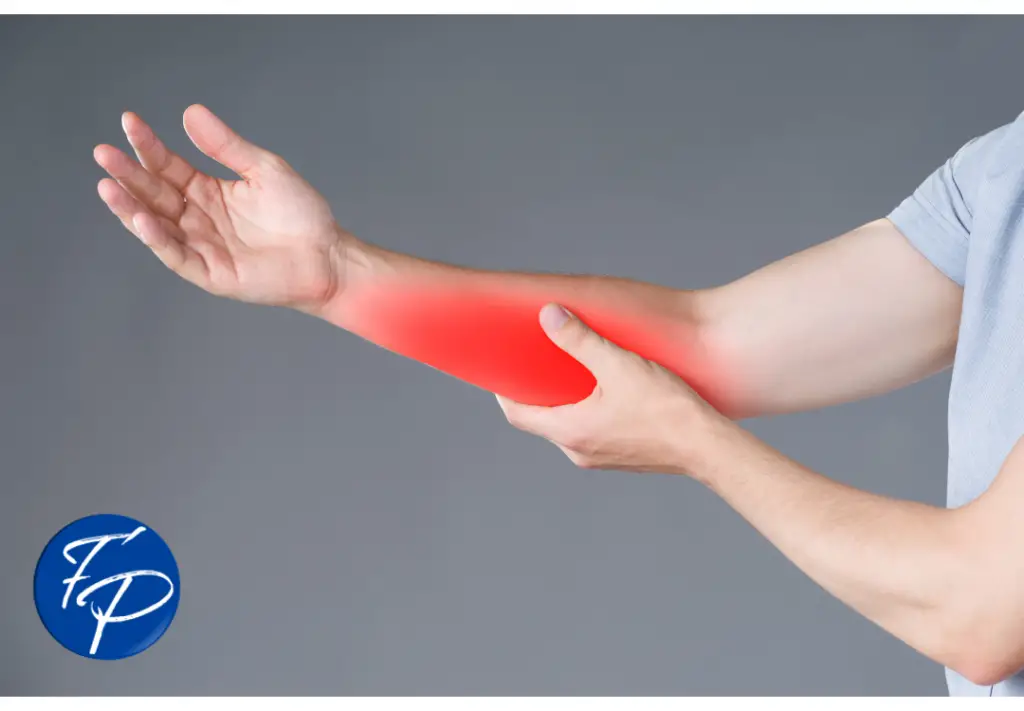
It’s considered an overuse injury. Pain worsens with repetitive movements like playing golf, working on the computer, lifting weights, and throwing a ball with the kids.
In this article you’ll learn what causes golfer’s elbow, the best treatments and my top 10 exercises to get your elbow back to 100%.
What is Golfer’s Elbow?
Golfers’ elbow involves irritation of the muscles and tendons on the inside of the elbow. In medical terms, it’s called medial epicondylitis. The muscles that flex the wrist form the common wrist flexor tendon, which attaches to the medial epicondyle.
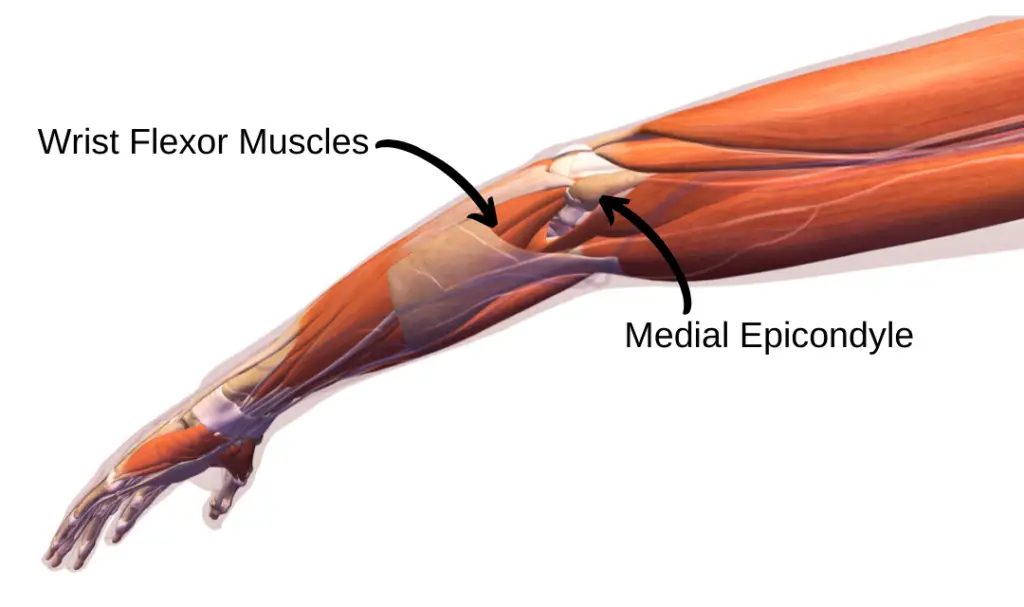
Golfer’s elbow occurs when muscles and tendons attaching to the medial epicondyle get irritated.The medial epicondyle is a bony bump on the inside of your arm–can you feel it on your elbow?
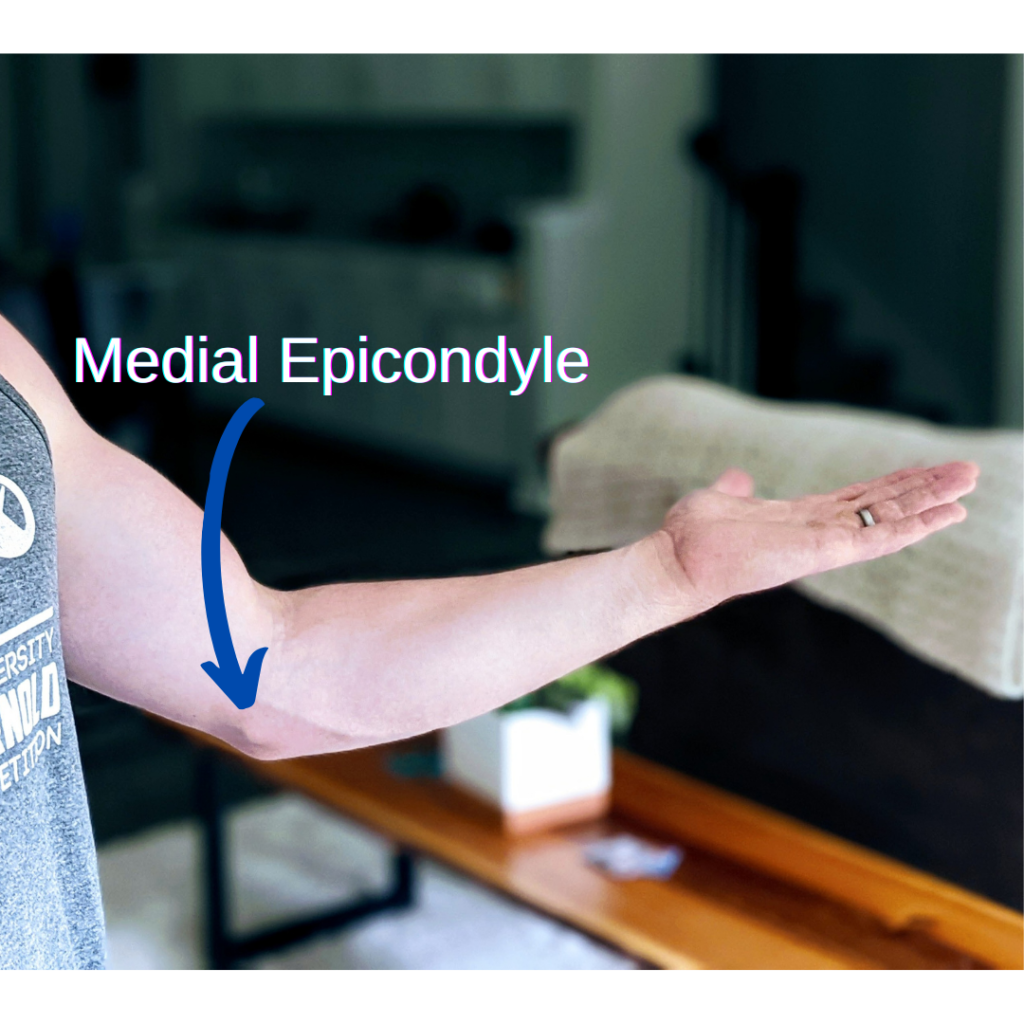
In contrast, tennis elbow involves pain and irritation on the outside of the elbow. It’s also known as lateral epicondylitis and it affects the tendons and muscles that extend the wrist.
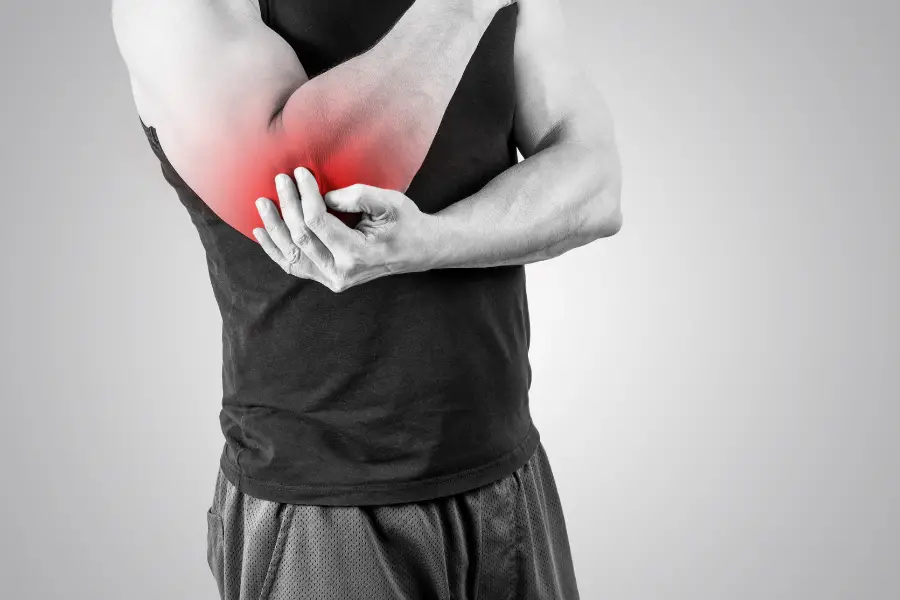
Tennis elbow is 10 times more common than golfers’ elbow (1). Since it’s more common, tennis elbow is better researched than golfer’s elbow. But tennis elbow research is applied to golfer’s elbow since they both involve tendon pain at the elbow.
What Causes Golfer’s Elbow?
Golfer’s elbow is caused by overuse and repetitive stress to the muscles that flex the wrist and pronate the elbow.
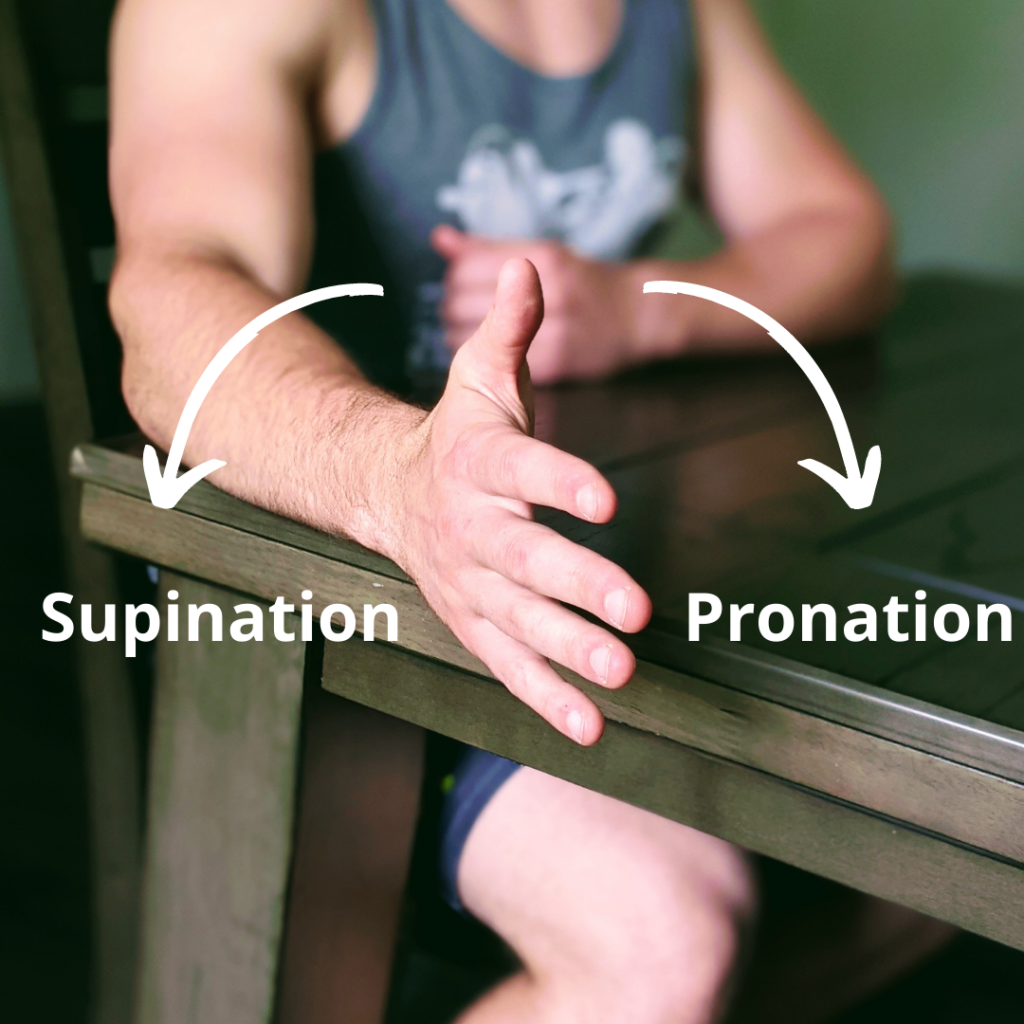
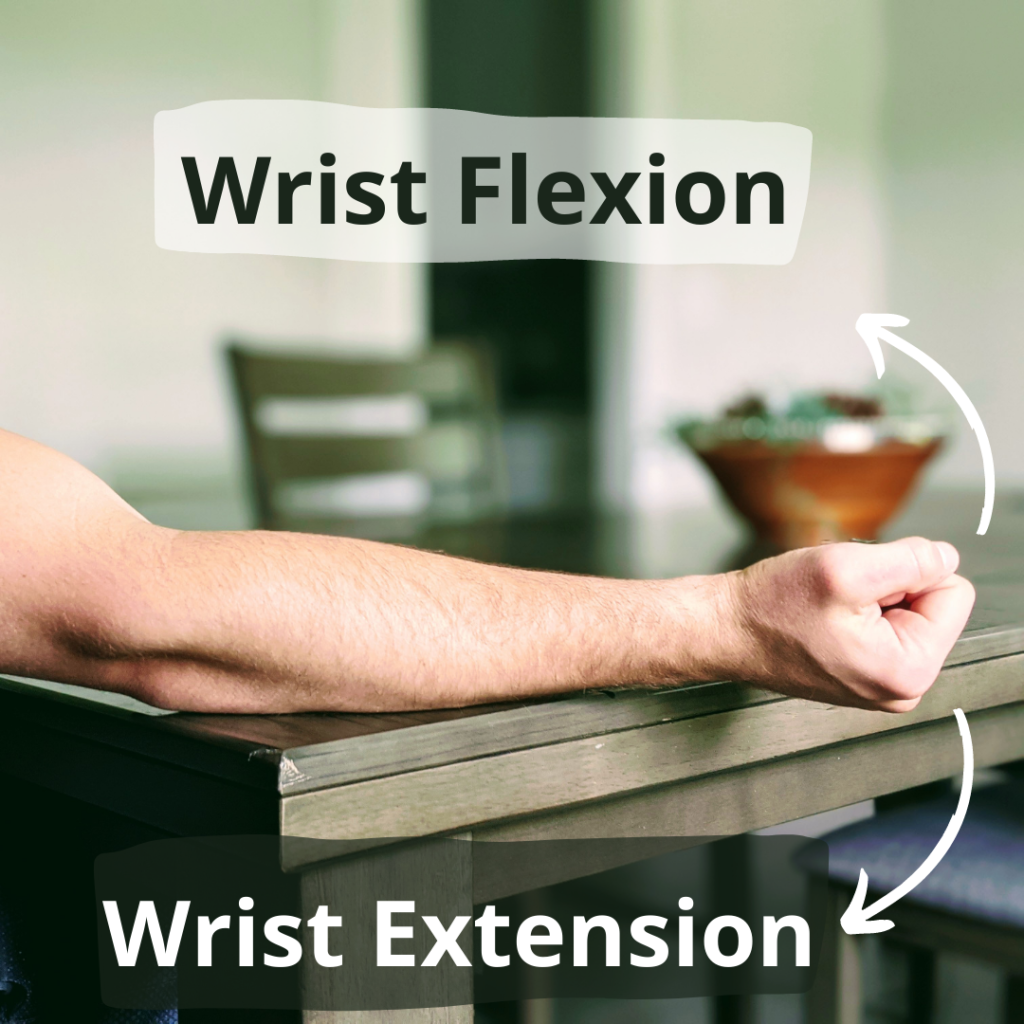
As the name suggests, this loading and overuse occurs during the golf swing, particularly near impact. As the golf club makes contact with the ball, the sand or the turf, force is transferred through the club to the arms.
The muscles along the inside of the elbow handle a lot of this force. The dominant/trailing arm is most often affected.
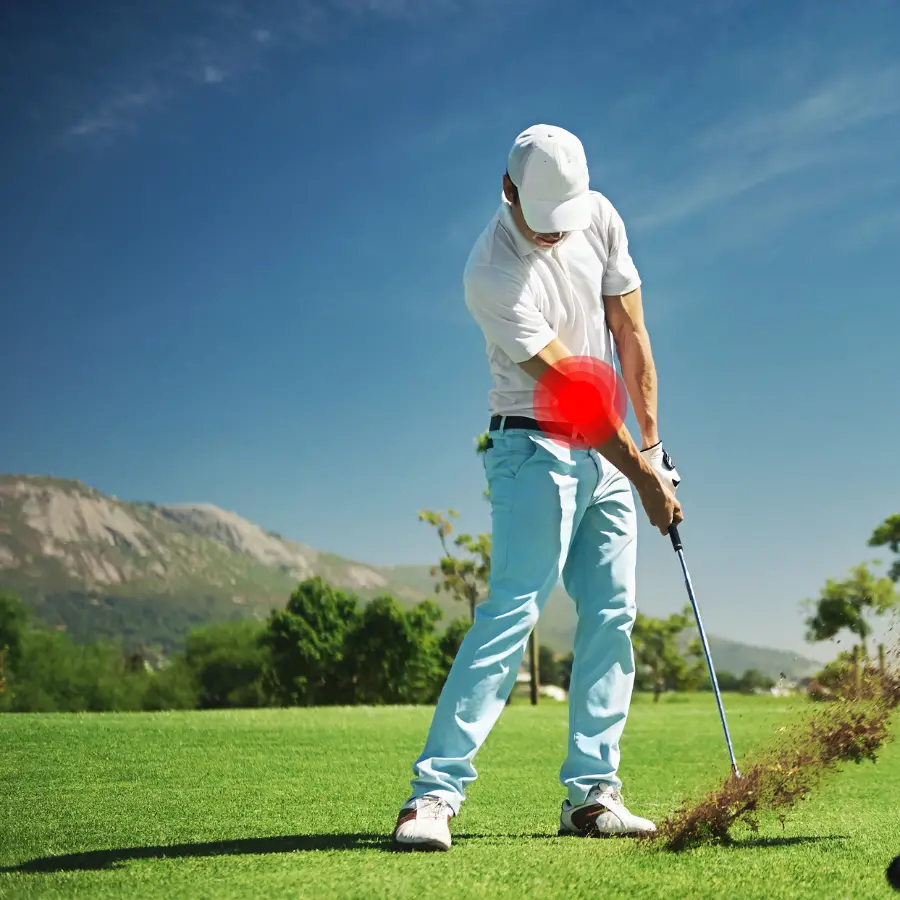
Hitting a bunker shot or taking a big divot amplifies the force at the wrist flexor muscles. I know from experience–taking huge divots was my claim to fame when I played competitive golf!
Golfer’s elbow also afflicts baseball pitchers, tennis players, rock climbers and weightlifters (1).
People in the general population suffer from golfer’s elbow, too. Especially those who do repetitive forceful work with their arms. Examples include food preparers, carpenters, mechanics and utility workers (1).
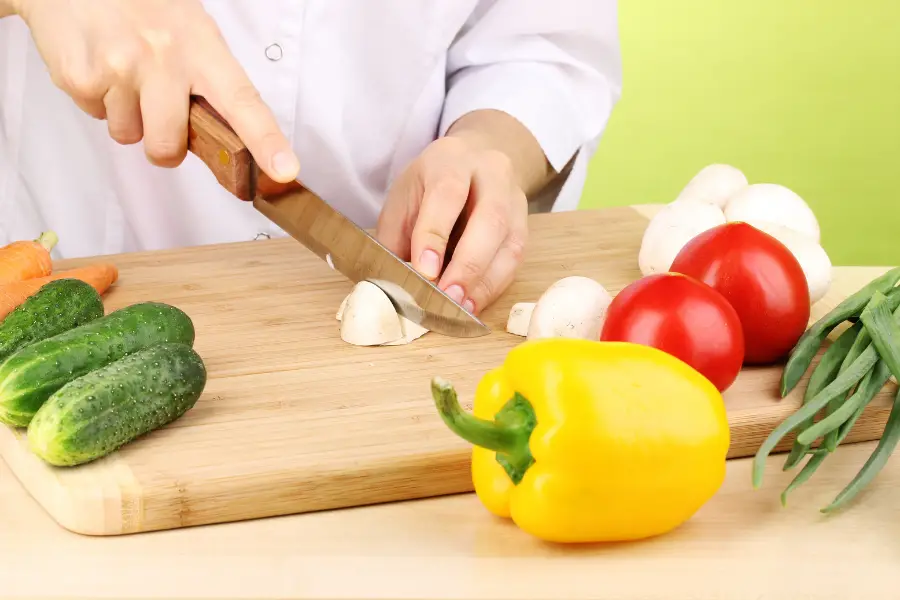
Other risk factors include smoking, diabetes, and obesity (1). All these factors inhibit the body’s ability to heal, adapt, and recover from injury.
Does Golfer’s Elbow Require Surgery?
Only in rare cases.
The prognosis for golfer’s elbow is good; most people get relief from physical therapy, anti-inflammatory medications and bracing (1,2). A full recovery is expected and surgery is rarely needed.
Even without treatment, golfer’s elbow resolves 80% of the time within 1-3 years (1).
Daily activities and the other risk factors discussed above (smoking, diabetes, obesity) play a pivotal role in determining the speed and likelihood of recovery.
Strengthening Exercises
Modifying or eliminating aggravating activities is the biggest key to success at the beginning of rehab. Just like a cut on your finger won’t heal if you keep picking off the scab, your elbow pain won’t resolve if the offending activities aren’t modified.
Tendons need the correct amount of loading–not too much, not too little. Too much loading and activity will cause pain. That’s how golfer’s elbow starts in the first place.
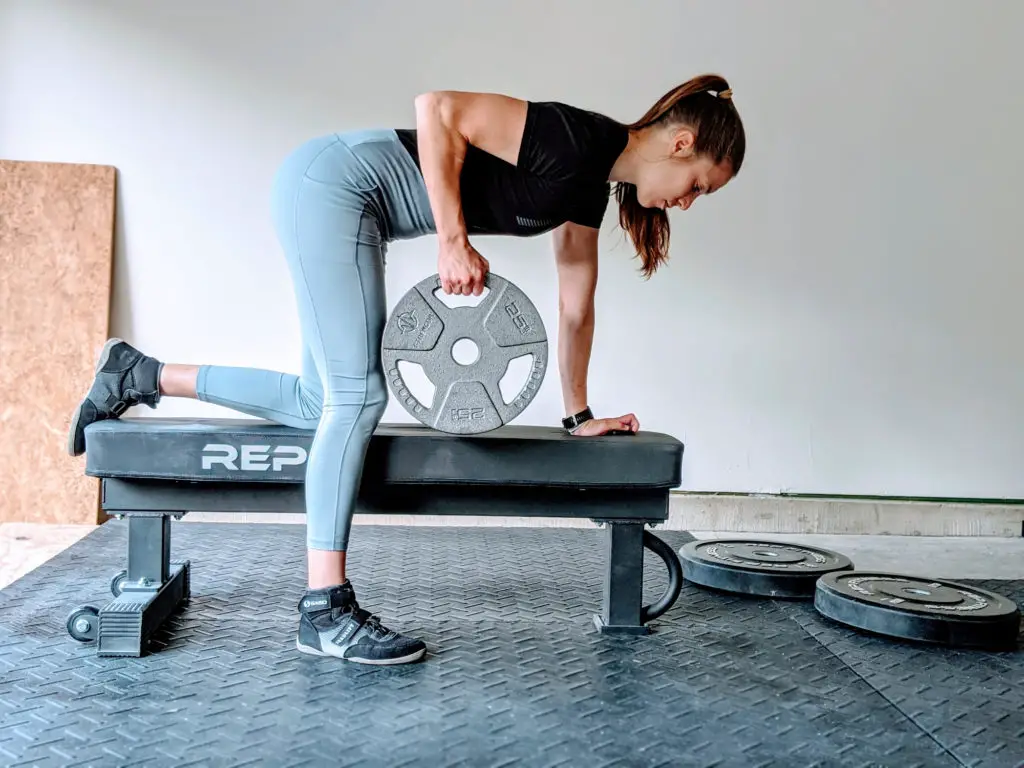
Too little loading isn’t the answer, either. Tendons don’t heal with rest. They need loading to remodel the tissue and build resilience. Rest reduces pain temporarily. But the tendon won’t be up to the challenge the next time you have to lift your child, open a jar or hit a 7-iron to a back pin.
That’s where the right exercises come in. Generally, strengthening exercises should be pain-free or mildly uncomfortable. Pain above 4/10 (0 is no pain, 10 is the worst pain imaginable) typically translates to more irritation.
These are my favorite exercises to load and strengthen the muscles and tendons at the medial elbow:
1) Ball Squeeze
Isometric exercises are a great introductory exercise for golfer’s elbow treatment. Research shows they provide immediate short-term pain relief for tendon pain (3). I love ball squeezes because they’re simple and strengthen the wrist flexors and extensors.

This exercise is a superb starting point for tennis elbow and golfer’s elbow rehab.
A tennis ball or lacrosse ball works great. It looks like a lime, but I’m actually using a lacrosse ball in the picture.

2) Eccentric Wrist Flexion Curls
The eccentric phase of a lift is the lowering portion. Think of a bench press. The eccentric portion is slowly lowering the bar to the chest. (The lifting phase is called “concentric”)
Tendon pain responds well to eccentric exercises. Wrist curls target the muscles involved in golfer’s elbow.
Start with your hand hanging off the edge of the table. Use the opposite hand to lift the weight and move your hand into wrist flexion.

Then, slowly lower the weight in a controlled manner. Repeat.

Start with a light weight, typically 1-3 lbs does the trick.
3) Wrist Flexion Curls
Once you’ve mastered the eccentric portion, perform wrist curls normally through the concentric (lifting) and eccentric (lowering) parts of the movement.

4) Eccentric Forearm Pronation
Pronation is moving from a palm-up to a palm-down position. One muscle that pronates the forearm–the pronator teres–gets aggravated with golfer’s elbow.
Start with eccentrics, slowly lowering the weight from a “thumbs-up” to a “thumbs-out” position. (This motion is eccentrically controlled by the pronators on the inside of the elbow)

Then, assist with the other hand to bring the weight back to the starting position.

Repeat for several sets of 10-15 repetitions. Use a hammer or hold a dumbbell by one end.
5) Forearm Pronation
Next, progress to the concentric and eccentric parts of this exercise–raise and lower the weight to and from the thumbs up and thumbs out positions.
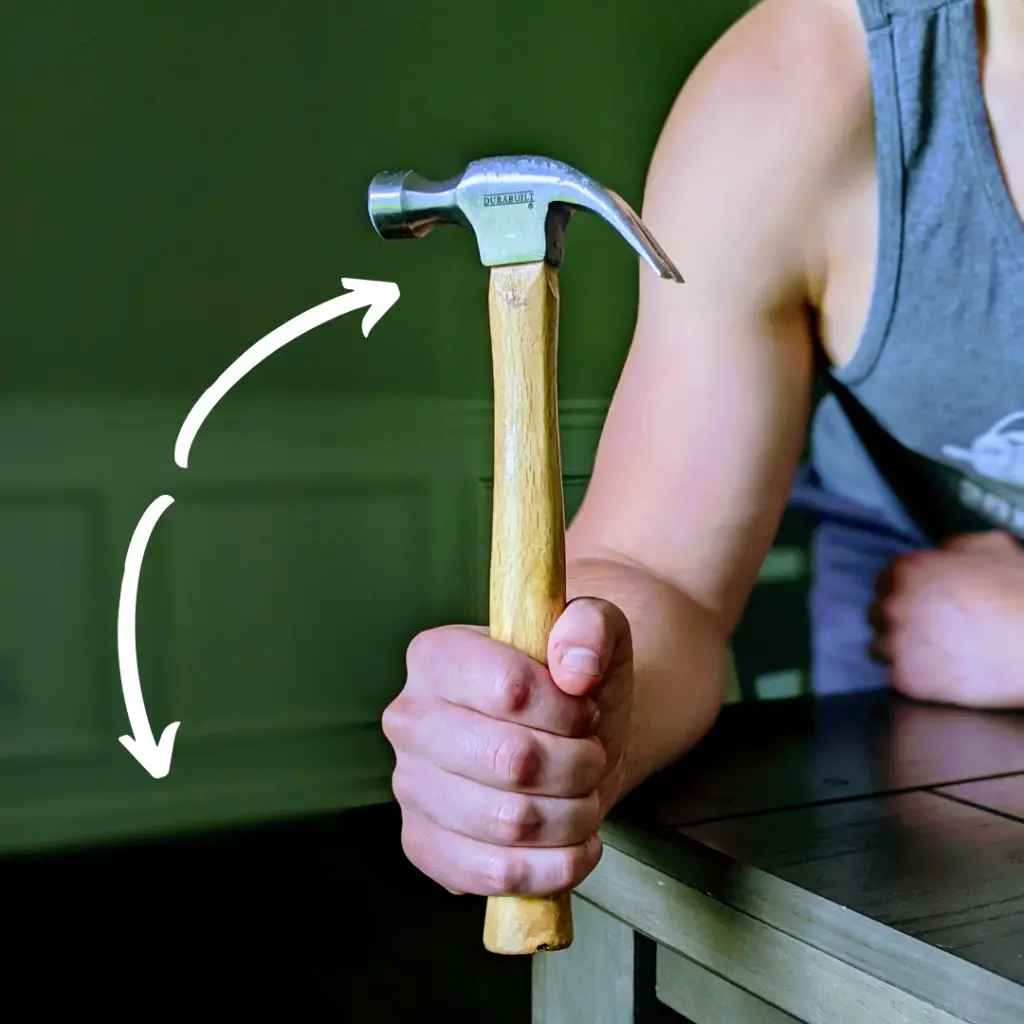
6) Wrist Ulnar Deviation
The final wrist flexor strengthening exercise targets the flexor carpi ulnaris, another muscle involved in golfer’s elbow.
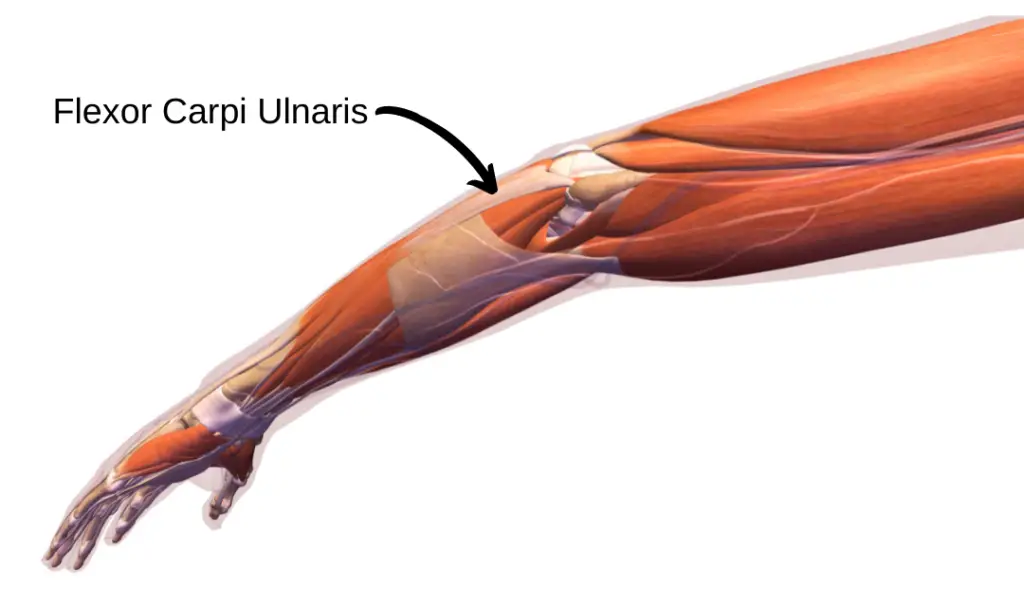
Ulnar deviation means moving the wrist towards the pinky side of the hand. This motion occurs during impact and follow-through of a golf swing or tennis forehand.
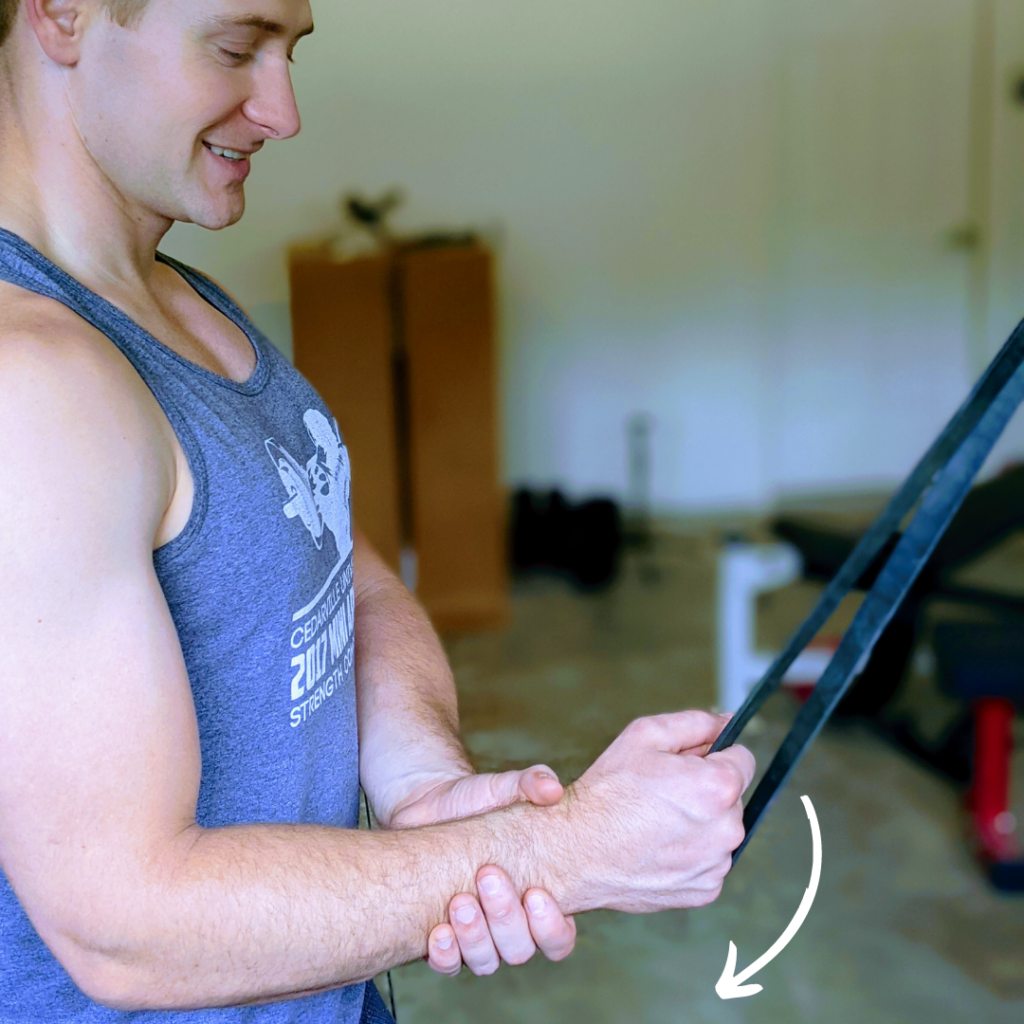
I like using a band because using a weight is cumbersome and requires you to lay on your stomach.
A light to moderate resistance band is ideal, like this one:

Can I Go to the Gym?
Yes! Golfer’s elbow should not prevent you from pumping iron and staying strong. Just be cautious with a few exercises:
Bench pressing with your wrists too extended can flare up golfer’s elbow. So start light and use some wrist wraps to support your wrists and keep your elbows happy.
Exercises demanding grip strength also tax the wrist flexors–things like pull-ups, cleans, deadlifts, curls and rows. A sturdy pain of lifting straps can make these exercises pain-free by reducing the demands on your forearm muscles.
How to Make Progress
All of these exercises stress the elbow muscles more if you straighten the elbow. As your strength improves and pain decreases, consider extending the elbow as you perform these exercises–you’ll feel the difference immediately!
Progressive overload is a key exercise science concept. In simple terms, it says we need to lift more weight or do more repetitions over time to get stronger.
If you went to the gym and did 5 lb biceps curls for 10 repetitions every day for 10 years, you wouldn’t get much stronger. Over time, you need to lift more than 5 lbs, or at least increase how many reps you’re doing if you want to get bigger, stronger or more toned.
Same goes for strengthening the muscles around the elbow. Use more reps, more weight or longer holds to get stronger and be able to tolerate more activity.
Key Upper Body Exercises
Along with targeting the muscles around the elbow, optimizing mobility and strength at the shoulders and upper back is key to treating golfer’s elbow. Exercises 7-10 target other important areas of the upper body.
7) Golf Club Twists
These exercises are great for building strength in the entire arm from the shoulder to the hand. They’re more advanced exercise–use these towards the end of the rehab process. Choke up on the club to make it easier, or hold it at the end of the grip for more of a challenge.
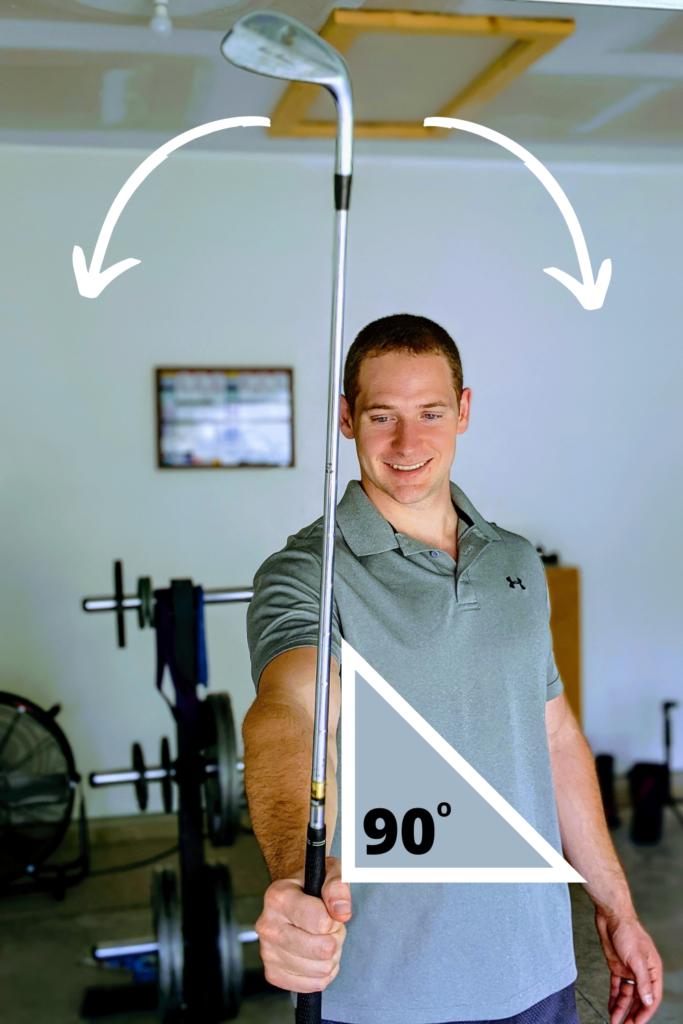
Slowly rotate 90 degrees each direction. Repeated 10-15 times each direction.
8) Open Book Exercise
This mobility drill is a classic exercise for stretching out the whole spine. Start on your right side with your hands together. Then, turn and reach your left hand behind you and rotate your upper body to the left. Turn your head left to increase the stretch.
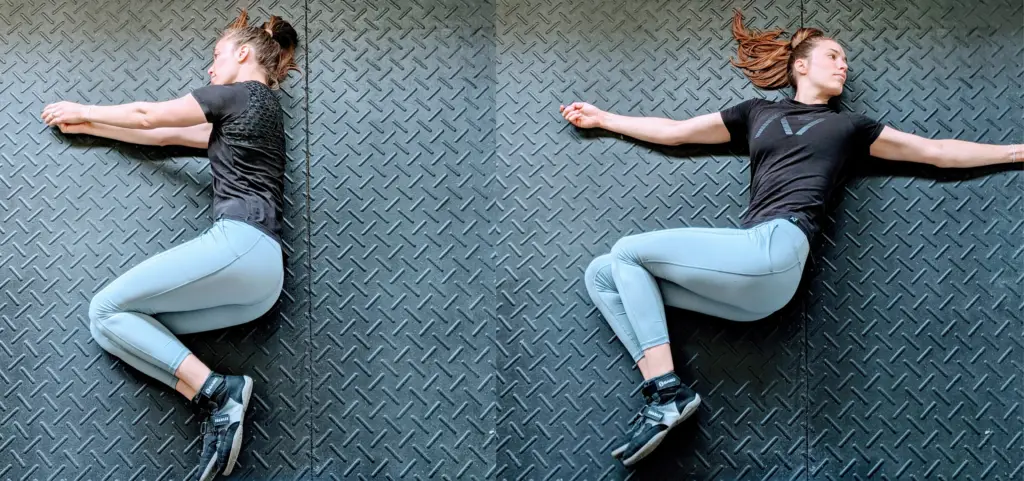
Keep the right hand on the floor, or use it to hold the left knee down. Take a deep breath or two as you hold the stretch–sink into a deeper stretch as you exhale. Repeat on the other side.
9) Chin Tucks
The cervical spine and upper thoracic spine can refer pain into the elbow, mimicking golfer’s elbow. In fact, elbow pain originates from the spine 44% of the time! (4)
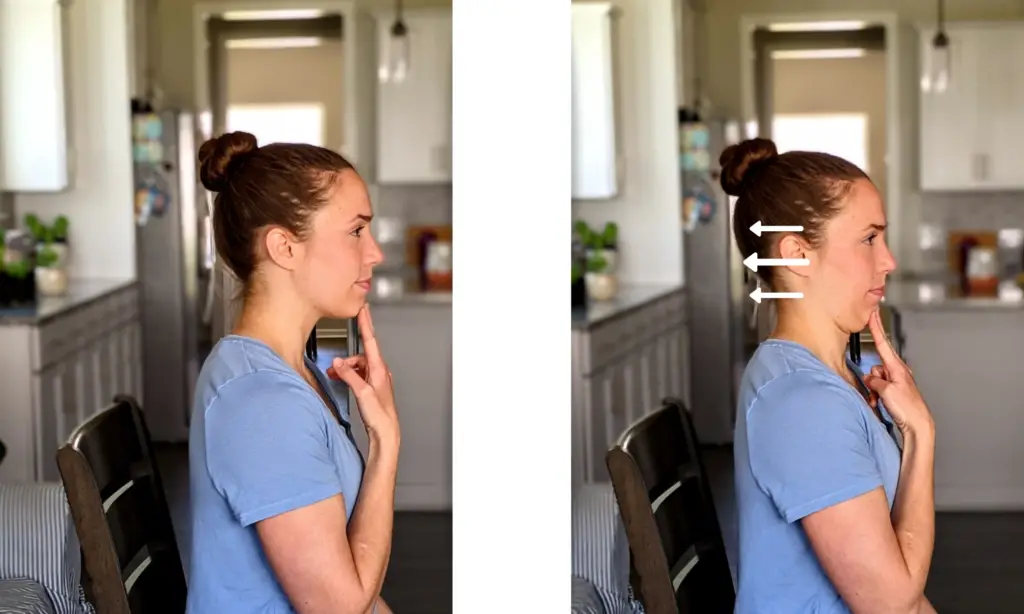
Chin tucks are my go-to option to screen the spine before directing treatment to the elbow.
10) Foam Roller Thoracic Extensions
This exercise mobilizes the thoracic spine–it’s a great option after a long day of desk work.
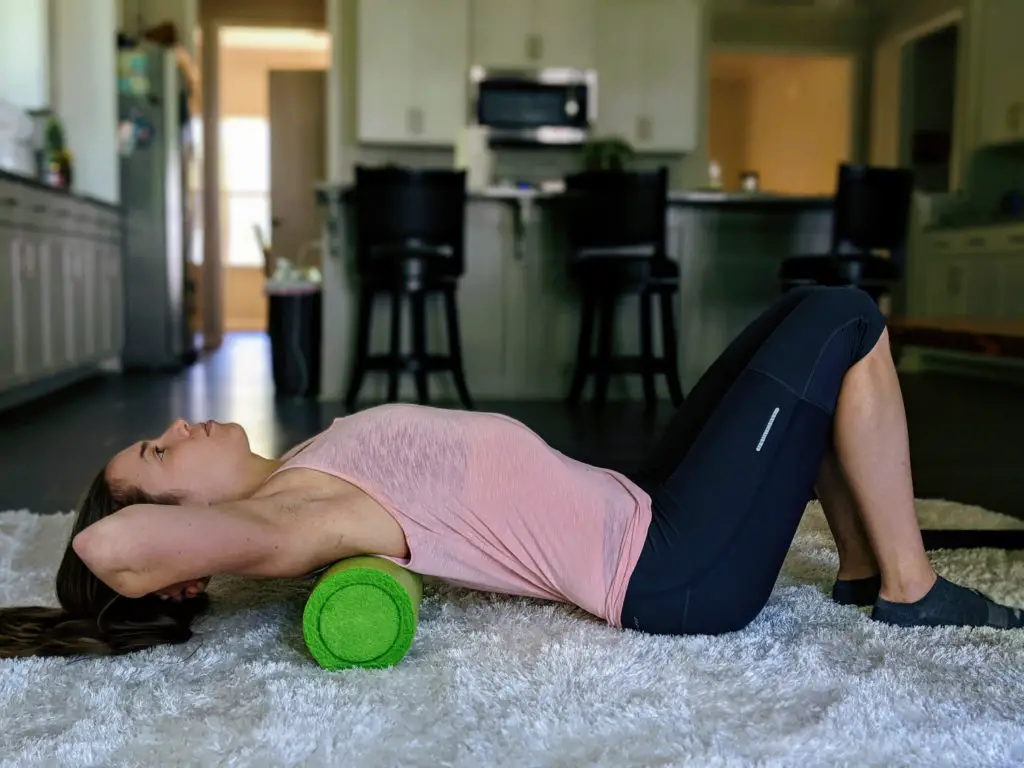
Knobby foam rollers aren’t ideal for this exercise–instead, try a smooth one like this:

Looking for more thoracic mobility exercises? Check out 15 PT Exercises for Mid Back Pain
There you have it–my top 10 exercises for golfer’s elbow. Before you go, check out these bonus tips on how to manage golfer’s elbow!
Bonus Tips
These tips will give you even more information to successfully manage golfer’s elbow.
Elbow Braces
Bracing straps provide short-term pain relief (2). They reduce pain by spreading out the loading on the tendon. Braces help people with golfer’s elbow get back on the course, work more comfortably and play sports with less pain.
This golfer’s elbow brace has the best reviews on Amazon:

Lifting Straps
Lifting straps reduce grip strength demands during lifting. They make deadlifts, rows, pull-ups and biceps curls manageable with golfer’s elbow.
I love these Rogue Leather Lifting Straps. I’ve used them for almost 10 years for hundreds of heavy deadlifts, and they’re still holding strong. They’re a must-have to keep training hard through golfer’s elbow.
Workplace Ergonomics
With the recent work-from-home trend, workplace ergonomics have changed for many people.
Poor ergonomics can contribute to elbow pain. Here are a few keys to optimize your desk set up.
Your elbows should be positioned about 90° with the elbows and wrists supported.
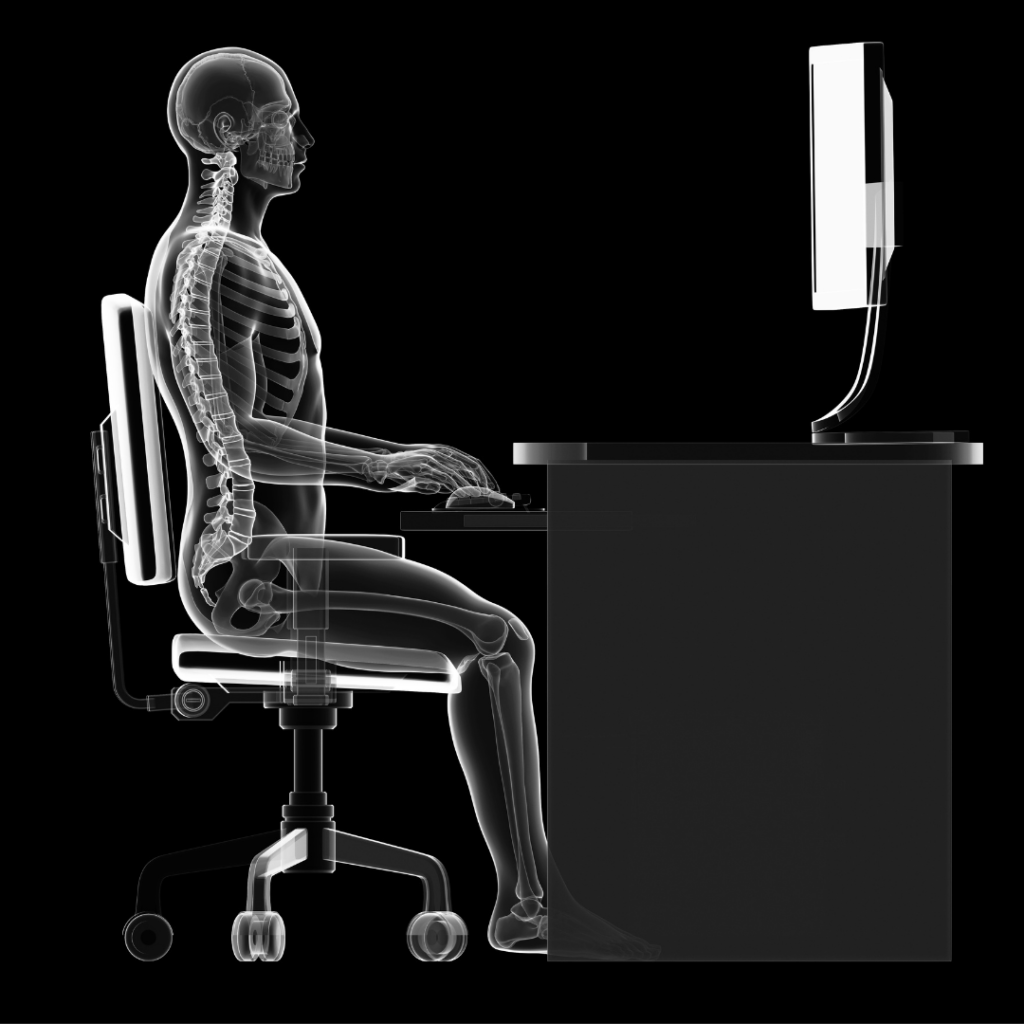
Avoid “Frankenstein Typing” (a Facts & Physio original term) which places lots of stress on your shoulders, elbows, and wrists–shown below.

Support your wrists. If the wrists aren’t supported and stay in an extended position, the wrist and finger muscles have to work harder.
Our muscles are the strongest when they’re in a “Goldilocks” position–not too short, not too long. Typing for hours with your wrists extended puts your forearm muscles in a sub-optimal position–and contributes to elbow pain.
Need wrist support for your keyboard or mouse? Try a device like this one to make your desk set-up more ergonomic and comfortable

Poor sitting posture increases the stresses on your neck and upper back. Problems in these areas can contribute to arm pain. Try using lumbar support to improve your sitting posture and support your low back
Looking for more ways to optimize your desk set-up? Check out 5 Ways to Sit with Less Pain
Manual Therapy
Studies show joint mobilization and manipulation at the neck, thoracic spine and elbow is effective for elbow tendon pain (5). See your local physical therapist for a comprehensive assessment and treatment plan.
Dry Needling
Dry needling involves inserting a thin, solid needle into a muscle at the location of a tender, palpable band. For golfer’s elbow, the wrist flexors are often the best place to start.

Please do not try this at home. Your ulnar nerve and brachial artery are located on the inside of your elbow–within striking distance of an inexperienced dry needler!
Many physical therapists (myself included) perform dry needling, and other medical professionals use it too.
Dry needling is proven to help alleviate elbow tendon issues (6). In my experience, it’s best combined with strength exercises, like the ones described above.
To learn more about dry needling, read The Authoritative Guide to Dry Needling
Corticosteroid Injection
Corticosteroid injections provide powerful short-term pain relief (1). However, long-term outcomes aren’t great (1) and side effects include tendon weakening and rupture (7).
Platelet-Rich Plasma Injection
PRP injections are controversial interventions for golfer’s elbow and tennis elbow. The evidence for their effectiveness is mixed with some studies supporting their use (8). However, they’re expensive and most insurance companies don’t cover them.
Surgery
Surgery is only reserved for patients who fail conservative treatment over 6 to 12 months (1). It’s typically not required for golfer’s elbow. Overall outcomes from surgery are good with about 90% of patients experiencing pain relief after surgery (9).
The rehab process takes 3 to 6 months before patients can return to sports (1). It’s not a quick and easy fix if you’re looking to avoid rehab!
Just like any surgery, there are risks and complications. Pain relief is likely but 20% of patients don’t return to their prior level of sports activity (1).
Summary
Golfer’s elbow usually resolves with physical therapy, exercise, anti-inflammatory medication and bracing. Please consult with your physician or physical therapist if you’re dealing with golfer’s elbow so you can get your recovery on the right track.
What treatments have you tried for golfer’s elbow? Let me know what you thought of this article–drop questions and comments below!
For more proven pain relief tips, join the free, fast-growing Facts & Physio Newsletter. Plus, get The Recovery Checklist when you sign up.

